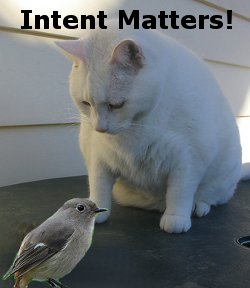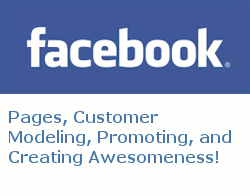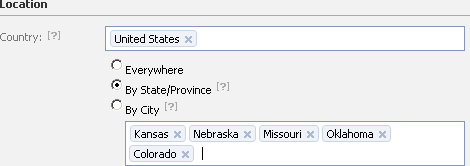
I am excited to hear from you if you can relate to this. Have you ever had somebody ask you to do something and use the phrase “when you have some extra time”? It may be just fine if a friend says that, while asking you to go and do something fun. When it attacks your profession, there is a line to be drawn.
I get this “extra time” concept thrown my way almost every day. I am not joking or exaggerating about this. I know that a lot of other professional service people get this, too. It is hard for a lot of people to understand that when your product is knowledge or time, it still has a cost.
Yes, even those intangible things like rubbing brain cells together to create a spark, blowing on it, and turning it into a flame actually have a real and measurable cost. So, how can we deal with this, and make it understandable to people who think there is some magical “extra time” laying around to hand out for free?
It seems apparent that old sayings like “time is money”, “you get what you pay for”, and “time is our most valuable resource” have outlived their usefulness. They have become as cliché as a passing stranger asking “how are you doing?” They don’t really want to know how you are doing when they utter that. Try it out the next time you hear it, and give them a big earful and you will see what I mean. People often overlook respect for other peoples’ time with a similar disregard.
I suppose that free time can be a touchy subject for a lot of people, but not for me. I am going to share my responses when people slip me this sort of “give me free stuff” proposition. If you are a professional who deals with this, I hope it will help you to manage your time. If you are a time-beggar, I hope this will help you to be more understanding and respectful the next time this absurdity begins to spew forth from the vile and disrespectful hole between your lips.
Defending Your Extra Time
If you are ever faced with similar matters of requests for your free time, think about what else you could be doing with it. These are just a handful of thoughts which stomp loudly through my head when people ask me to provide professional services in my extra time:

Extra Time? My Kids Would Love That! – When I am asked for my extra time, the first thing that comes to my mind is how much my wife and kids would really love it if I had some extra time to share with them.
Have You Tried This at a Restaurant? – I imagine it like this: “Hey waitress, when you have some extra food back there in the kitchen, can you do me a favor, please? In return, I will send my hair stylist in to see you, and I am sure he will make up for all of the free food I gobble while I keep you from earning your tips. He is a great guy, and I am on my way to see him for a free haircut as soon as I leave here.”
Doctor, My Toe Hurts! – “I know that you usually charge people for this, and you have huge liability and licensing in the balance, but since we are not in the office, could you do this one as a freebie?”
I Want a Free Car, Too! – This is funny for me, because I have had car dealers offer to trade me very nice cars for my work. This always reminds me to say: “You want my extra time, but you would like it for free? Let me think about that and get back to you when I have something really large with which to hit you over the head.”
Motorcycle! – See the 47 second video … Enough said.
Misconceptions About “Extra Time” Are Worse in Some Industries
I realize that in some industries, the lines are a bit more blurred than others. In my job role, I find that a lot of people want me to simply “look it over” and to give them a “quick estimate”. Although it may not seem to be a big deal, performing marketing asset reviews and building marketing strategies puts food on my table. It is not just the act of implementing what I know that I am paid for, but also the research and strategy.
Researching, planning, and “looking it over” are things which most people expect to pay for in the accounting, legal, medical, and many other fields. Those of us in the marketing industry are also paid for that time we spend doing the things you may imagine to be “quick and easy” for us. Otherwise, it would be common for us to waste enormous amounts of our time writing boilerplate marketing plans for people who are not serious enough about their business to do what they really should be doing. Worse yet, if we provide a plan and you decide to try and implement it yourself or have an inferior marketing person do it for you, we look stupid for a plan that failed but could have succeeded with abundance.
Drunken Sailor Coming Through!

The reality is that for true marketing professionals, our time is worth just as much as that iPhone you are holding, that car you are driving, or that house you live in. You see, this is because our time and knowledge is what we earn our living with. We don’t sell items … we help other people to sell items. Our job is to earn more money for our clients.
If I had some extra time, wouldn’t it make sense that I would use that “extra time” to work harder and to sell it at its fair market value? Yes, that’s right … that is exactly what I would do. So, here you go:
I appreciate your show of confidence by asking me to look at your business and give you recommendations to make it more marketable. I would be delighted to write you a researched marketing plan and proposal free of charge … if it was free for me, too. You see, my time and knowledge is what I earn money with, just like a shoe store uses shoes to make money.
This is my extra time, right now. I am using it to write this blog so that more people will know who I am, respect the value of my time, and pay me money for that extra time I had laying around.
Respectfully,
Mark Aaron Murnahan
All of my extra time is gone. If I find any more, I will use it to further my business reach. Fortunately, you also receive a benefit from it, because I am providing you with a constantly growing blog archive to teach you things that you can put to use in your extra time.
If you want some of my time to help you decide if it is worth paying for, I have already used that time, too. I used it to build a fantastic reputation, and an exemplary work history.
Whether this reaches you as a person who earns a living with your time and knowledge, or a person on the other side, I hope I have helped you see things a bit differently. I have tried my best to express consideration for both parties, and I hope you will do the same.
Thank you for your time.
Big Ben photo credit to peterpearson via Flickr
Podcast: Play in new window | Download






